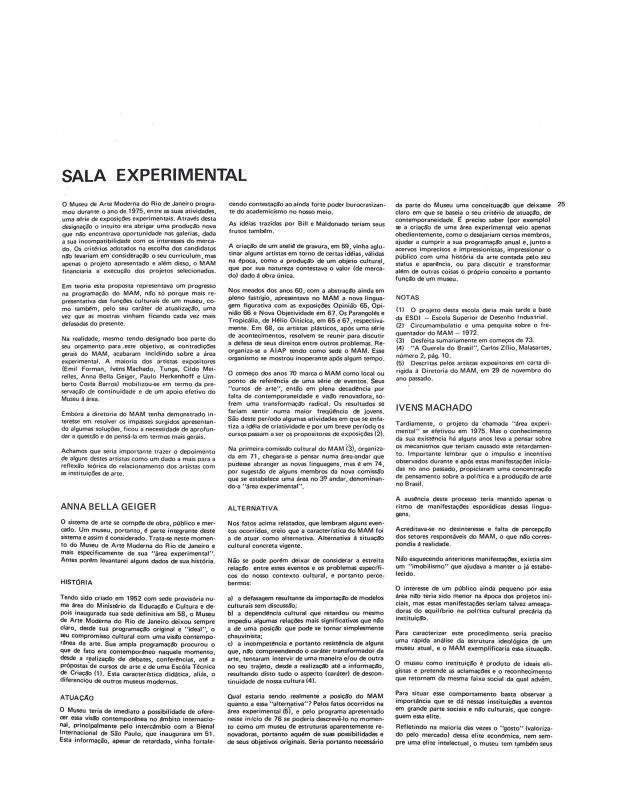This article appeared in the journal Malasartes, a short-lived publication organized by Rio de Janeiro artists who were proponents of experimental art in the 1970s. Among its editors were artists of the stature of Cildo Meireles, Carlos Zílio, Carlos Vergara, and Rubens Gerchman.
Umberto Costa Barros became known in the late 1960s and early 1970s for his installations in architectural spaces in public institutions in the city of Rio de Janeiro. His approaches addressed relationships of equilibrium taken to the limit, as well as showing the opaque nature of the spaces in which he placed his work.
Ronaldo [Correia de] Brito (b. 1951), from the state of Ceará, is one of the most important and influential art critics on the Brazilian art scene. He has published essays in books, journals, and exhibition catalogues, also contributing to the newspaper Opinião. Brito was one of the founders of the journals Malasartes and Gávea. In the 1970s, he was prominent in the art world, and promoted the reexamination of the Neo-Concrete movement and its legacy in Brazilian contemporary art.
As supplementary reading, see the text “Sala Experimental” [doc. no. 1110602], written jointly by Anna Bella Geiger, Ivens Machado, and Paulo Herkenhoff. This article was also published in the journal Malasartes,no. 3.

